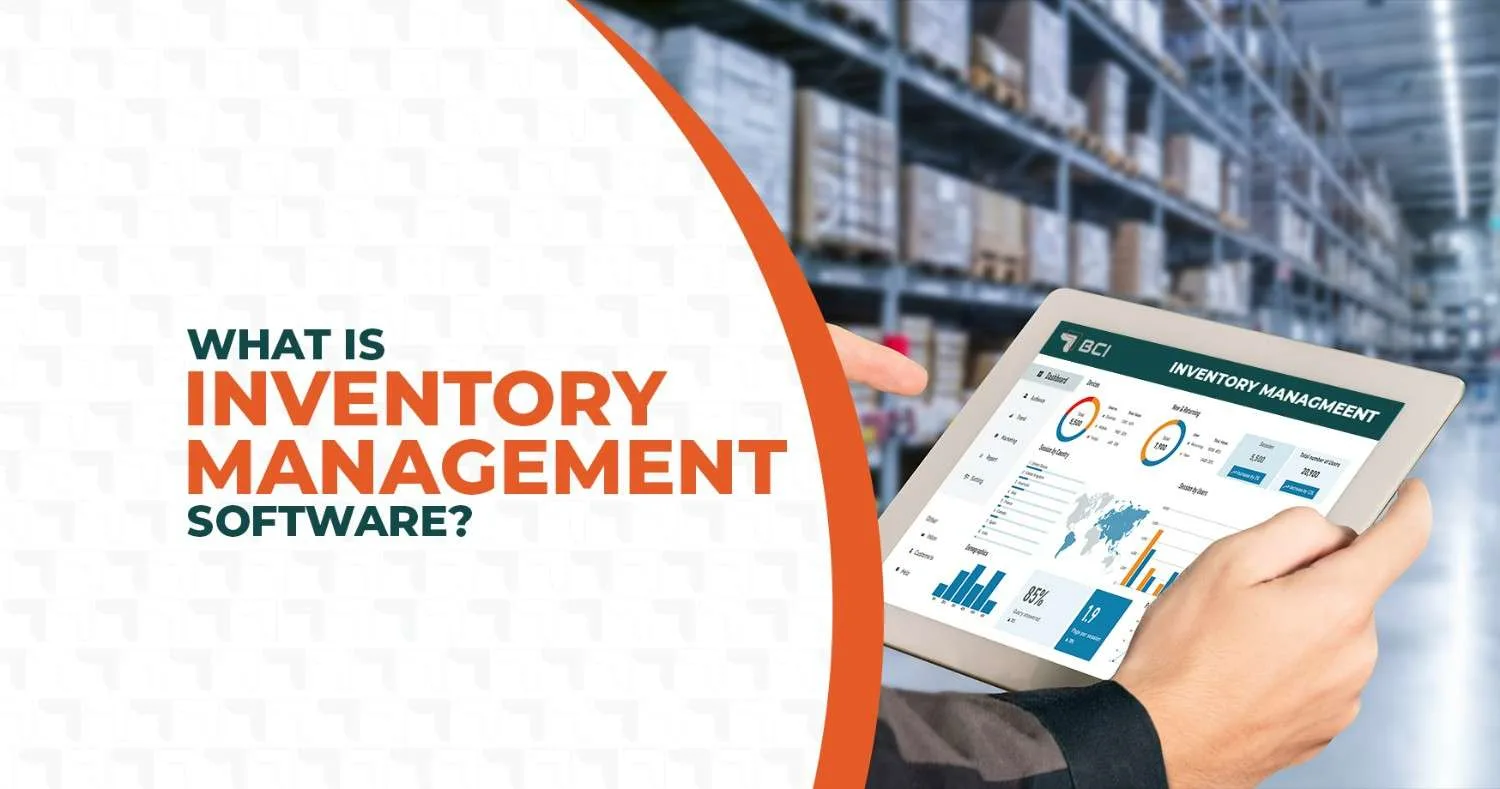
What Is Inventory Management Software?
Inventory management software is a digital system that records, tracks, and manages stock across different storage locations/stores. It provides real-time updates on inventory levels, product movements, and order status. The software consolidates data from warehouses, retail stores, and online sales channels to ensure accurate stock counts and timely replenishment. It also supports demand forecasting, purchase order creation, and supplier coordination, helping businesses maintain optimal inventory levels while reducing excess stock and avoiding shortages.
Why Do Businesses Need Inventory Management Software?
Businesses across industries face recurring challenges in managing stock efficiently. Common issues include stockouts that disrupt sales and damage customer trust, overstock situations that tie up working capital and lead to unsold goods, and manual errors that cause discrepancies between recorded and actual stock. These problems are often amplified when relying solely on spreadsheets or manual systems, which require constant updating, lack real-time visibility, and are prone to human error.
For example:
- An e-commerce business may oversell a product because stock data is not updated quickly enough after each online purchase.
- In the pharmaceutical sector, a misplaced or expired batch can lead to compliance issues and financial loss if inventory is not accurately tracked.
- Retail chains with multiple outlets often struggle to balance stock distribution without an integrated system, resulting in excess stock in one store and shortages in another.
How does Inventory Management Software Work?
Inventory management software functions as a single source of truth that automates, monitors, and optimizes the movement of goods within a business. It integrates data from sales channels, suppliers, and warehouses, providing a single source of accurate, real-time information. This reduces reliance on manual tracking methods, which are prone to delays and inconsistencies, and enables businesses to maintain operational precision across locations and product lines. So answering the question - How does inventory management software work, here is how the process goes:
1. Real-time inventory tracking – The system continuously updates stock levels across multiple warehouses or retail outlets, ensuring that sales, returns, and replenishment are reflected immediately.
2. Automated reordering – Pre-set thresholds trigger purchase orders automatically, preventing stock shortages and excess accumulation.
3. Batch and lot tracking – Critical for industries like pharmaceuticals and food retail, this feature allows businesses to track expiry dates, manufacturing batches, and regulatory compliance.
4. Integration with sales platforms – Connections with e-commerce sites, POS systems, and ERPs enable synchronized updates, eliminating mismatches between inventory and sales records.
5. Reporting and analytics – The software generates detailed insights into stock movement, turnover rates, and demand trends, supporting data-driven decision-making.
Key Features of Inventory Management Software
Inventory management software comes with a range of capabilities designed to give businesses greater control over their stock, streamline operations, and reduce costly errors. Each feature addresses a different stage in handling goods, from receiving them into storage to fulfilling customer orders. Below is a breakdown of the essential functions and their importance.
1. Multi Warehouse Management
Businesses with several storage locations can track and manage stock separately for each site while still viewing a consolidated report. This ensures that transfers between facilities are recorded accurately, and stock levels remain balanced. The function also enables quick decisions on fulfilling orders from the most suitable warehouse based on location and stock availability.
2. Barcode and RFID Integration
The system supports barcode scanners and RFID tags, which speeds up item identification during stock checks, receiving shipments, or processing sales. Both workflows reduce manual entry and improve accuracy in stock handling.
Read more about the benefits of barcode scanners that could improvise your inventory management flow.
3. Stock Alerts and Reorder Management
Users can set minimum quantity thresholds for each product. When stock falls below the set level, the system sends alerts so replenishment can be arranged in time. This prevents running out of critical items and avoids emergency purchases at higher costs. Automated reorder settings can also be applied to maintain consistent availability.
4. Reporting and Analytics
Detailed reports allow managers to review sales trends, product turnover rates, and storage efficiency. For example, analytics may show which items move slowly, helping decide whether to discontinue them or offer promotions.
5. Integration with ERP and CRM
Linking the inventory system with Enterprise Resource Planning (ERP) or Customer Relationship Management (CRM) software creates a connected workflow. This ensures that inventory data influences financial records, purchase planning, and customer service without requiring manual data transfer. For instance, sales teams can see available stock when negotiating deals.
6. Purchase Order Management
The system can generate and track purchase orders directly. This includes recording supplier details, expected delivery dates, and the status of pending shipments. It simplifies procurement by ensuring every order is documented and monitored until the goods are received and added to inventory records.
7. Mobile Access
Managers and staff can check stock levels, approve purchase orders, or perform item lookups from a smartphone or tablet. This flexibility is particularly useful for on site inspections, remote warehouse visits, or field sales operations where immediate access to inventory data is needed.
Read more about What is Inventory Management System
Types of Inventory Management Software
Inventory management software is available in a variety of formats, each built to serve specific operational needs. While some are modified to meet the demands of particular industries, others provide broad functionalities to handle every aspect of stock control from purchase to delivery.
- Warehouse inventory management software – Specialised inventory tracking system for stock movement within warehouses, including storage location mapping, automated reordering, and integration with barcode or RFID systems. You can also read about our sector-friendly warehouse management system that can simplify your warehouse operations.
- ERP inventory management software – A core module within enterprise resource planning systems, linking inventory data with finance, procurement, and production for unified decision-making.
- Ecommerce inventory management software – Designed for online retailers, this keeps product listings synced across platforms, prevents overselling, and manages fulfilment workflows.
- Manufacturing inventory management software – Monitors raw materials, tracks work-in-progress goods, and schedules production runs to avoid shortages or bottlenecks.
- Multichannel inventory management software – Consolidates stock data from physical stores, e-commerce platforms, and marketplaces, offering a single source of truth.
- Wholesale inventory management software – Helps bulk sellers track large order volumes, manage supplier relationships, and optimise pricing based on stock levels.
- Accounting software with inventory management – Integrates basic stock control with financial reporting, useful for small to medium businesses seeking simplicity.
- Small business inventory management software – Streamlined, easy-to-use systems focusing on core stock tracking and order management without unnecessary complexity.
- Cloud-based inventory management software – Provides anytime, anywhere access, with real-time updates and scalability for growing businesses.
- Food and beverage inventory management software – Tracks perishable goods with expiry monitoring, batch tracking, and regulatory compliance features.
- Stock control software – A lightweight solution focusing purely on monitoring quantities, movements, and reorder points without broader supply chain features.
Benefits of Using Inventory Software
In many warehouses and retail setups, the biggest drain on efficiency comes from mismatched stock records and delayed visibility into what is actually available.
A single misplaced item or incorrect entry can ripple through the system: slowing order fulfillment, increasing holding costs, and leaving managers to make decisions based on outdated data.
Inventory software addresses much more of these process gaps by automating tracking, improving accuracy, and creating real-time insights that directly impact day-to-day operations. Let’s have a look at the list of benefits of inventory management software:
1. Reduced human error
Manual data entry and stock counting can easily result in mistakes such as duplicate entries, incorrect quantities, or missed updates. Inventory software reduces these risks by automating stock adjustments in real time, ensuring that every sale, return, or restock is accurately recorded.
2. Improved stock accuracy
With live tracking of product movement, you always know the exact quantity available. The system updates stock counts immediately after each transaction, preventing overstocking or stockouts and ensuring accurate product availability for customers.
3. Faster order fulfillment
Automation speeds up the process of picking, packing, and shipping. The system can generate pick lists, assign orders to the right warehouse, and track shipping status, allowing orders to be completed and dispatched in less time.
4. Optimized storage and cost savings
By identifying slow-moving items, seasonal trends, and ideal reorder points, the software helps reduce unnecessary storage of low-demand products. This optimizes warehouse space and lowers holding costs, freeing resources for high-demand stock.
5. Better decision-making with analytics
Inventory software provides detailed reports on sales trends, turnover rates, and supplier performance. These insights help in planning purchases, managing budgets, and aligning stock levels with customer demand.
How to Choose the Right Inventory Management Software?
Selecting inventory management software is not just about ticking features off a checklist. The real challenge lies in matching the tool to your operational reality:
- how many SKUs you handle
- how complex your supply chain is
- how your team works day to day
- how quickly you need the system up and running without disrupting ongoing operations.
- Infrastructure requirements and limitations
Here is how to make an informed choice based on your specific requirements.
1. Business size and type
Your inventory management needs vary significantly depending on whether you are a small e-commerce seller, a mid-sized wholesaler, or a large manufacturing enterprise. Smaller businesses may prefer lightweight, cloud-based inventory software with basic order tracking and stock alerts, while larger operations often require advanced multi-warehouse management, batch and serial number tracking, and robust reporting tools, along with ERP integration.
2. Budget
Cost is not limited to the subscription or licensing fee. Factor in the total cost of ownership, which includes setup costs, hardware (if required), integration work, staff training, and ongoing maintenance. A lower upfront cost might be attractive but could lead to higher operational expenses if the system lacks scalability or requires frequent manual interventions. Opt for software that provides a clear pricing structure and allows you to scale features as your business grows without breaking your budget.
3. Integration capability
Inventory management rarely operates in isolation. It needs to sync seamlessly with your existing POS systems, accounting software, e-commerce platforms, and even CRM tools. Poor integration can create data silos, leading to stock discrepancies, delayed order processing, and frustrated customers. Check whether the software supports API integrations, offers pre-built connectors for your platforms, and allows real-time data syncing to maintain consistency across departments.
4. Scalability
The software should grow with your business. A system that works well with 1,000 SKUs today should also handle 50,000 SKUs tomorrow without performance drops. Scalability also includes the ability to add new warehouses, manage global operations with multi-currency support, and handle seasonal spikes in demand without requiring a platform switch. Choosing a scalable inventory solution ensures you won’t have to migrate to a new system just when your business starts expanding.
5. Ease of use
No matter how feature-rich the system is, poor usability can cripple adoption. Look for an intuitive interface, clear navigation, and customisable dashboards that allow team members to access the information they need without endless menu searching. Mobile accessibility is also essential for warehouse teams or managers on the move.
How BCI Can help in Inventory management
BCI offers effective solutions that improve inventory accuracy and simplify stock tracking. Designed to suit businesses of all sizes, from small to large enterprises, our solutions include comprehensive functionalities along with focussed training and ongoing support to help teams get up to speed quickly and use the tools effectively. With a deep understanding of the Indian market and regulations, our solutions are personalized to meet local needs, making inventory management more reliable and efficient.
Contact our experts today to get in-depth industrial insights.
FAQs
Q1. What is inventory management software used for?
Inventory management software serves as the backbone for businesses to monitor stock levels across locations. It records every incoming and outgoing item, tracks sales, and automates reorder processes. This ensures businesses maintain the right stock, avoid costly shortages, and manage warehouse operations efficiently.
Q2. What are the benefits of using inventory management software?
Using inventory software significantly lowers the risk of human error that often happens with manual logging. It provides accurate, real-time stock data, speeding up order fulfillment and reducing delays. Additionally, the software helps optimize storage space and lowers carrying costs through better stock turnover management, allowing companies to make smarter purchasing decisions.
Q3. What features should I look for in inventory management software?
Key features include real-time inventory tracking to avoid discrepancies, barcode or RFID support for swift data capture, multi-warehouse management to handle stock across sites, automated alerts for reorder points, comprehensive reporting tools, and seamless integration with accounting, ERP or customer relationship systems to streamline workflows.
Q4. How does inventory software improve stock accuracy?
The software updates inventory data instantly after every sale, purchase, or transfer. This reduces errors caused by delayed or missed data entries. Such accuracy is critical not only for maintaining stock levels but also for audit compliance, preventing losses, and enabling precise forecasting.
Q5. Can small businesses afford inventory management software?
Today’s market offers scalable solutions, especially cloud-based ones, that fit small business budgets. These platforms require minimal upfront investment and can grow with your business, providing essential inventory controls without the high costs traditionally associated with enterprise systems.
Q6. What’s the difference between inventory software and ERP?
Inventory software focuses narrowly on managing stock levels, reorder processes, and warehouse logistics. ERP systems include these inventory functions but extend to financial management, human resources, procurement, and other business operations, offering an all-in-one management platform.
Q7. Is cloud-based inventory software better than on-premise?
Cloud-based software excels in ease of deployment, remote accessibility, and automatic updates, reducing the need for dedicated IT support. On-premise software offers greater control over data and customization but demands significant IT resources and infrastructure investment.
Q8. Which industries use inventory management tools?
Sectors like retail, manufacturing, pharmaceuticals, and logistics depend heavily on inventory software. These industries face complex stock challenges such as batch tracking, expiry management, multi-location coordination, and regulatory compliance, all streamlined through robust inventory systems.
Q9. How much does inventory software cost?
Pricing depends on the scale and complexity of features needed. Basic cloud options are affordable for small businesses, often charged per user or by feature sets. Larger companies investing in integrated ERP modules or customized solutions may encounter higher costs but benefit from extensive capabilities.
Q10. What is the best inventory software for 2025?
Drawing on more than twenty years of automation expertise, Barcode India (BCI) has developed a powerful inventory management platform tailored to the dynamic challenges businesses face today. Built to scale from small enterprises to large corporations, it empowers businesses to optimize inventory levels, reduce errors, ensure industry-specific compliance, and streamline order fulfillment for greater operational success.
Get in Touch
Ready to take your business to the next level with BCI (Bar Code India)? We're just a phone call or email away.


